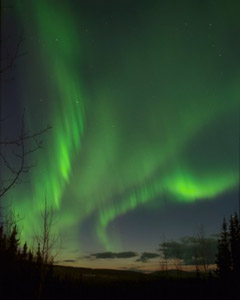This photo shows green "curtains" of the aurora borealis (Northern Lights). The picture was taken in Alaska in April 2001.
Click on image for full size
Image courtesy of Jan Curtis.
The Aurora
The aurora is
formed when protons and electrons from the Sun
travel along the Earth's magnetic field lines. These particles from the Sun are very energetic. We are talking major-league energy, much more than the power of lightning: 20 million amps at 50,000 volts is channeled into the auroral oval. It's no wonder that the gases of the atmosphere light up like the gases of a streetlamp!
The aurora is also known as the northern and southern lights. From the ground, they can usually be seen where the northern and southern auroral ovals are on the Earth. The northern polar auroral oval usually spans Fairbanks, Alaska, Oslo, Norway, and the Northwest Territories. Sometimes, when the Sun is active, the northern auroral oval expands and the aurora can be seen much farther south.
The lights of the aurora come in different colors. Oxygen atoms give off green light and sometimes red. Nitrogen molecules glow red, blue, and purple.
You might also be interested in:
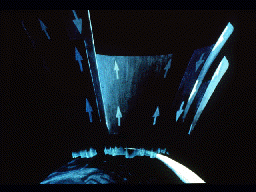
This picture shows the flowing of particles into and out of the auroral zone, as Field-Aligned currents (FAC's) take at short-cut through the atmosphere. Some of the particles entering the auroral zone
...more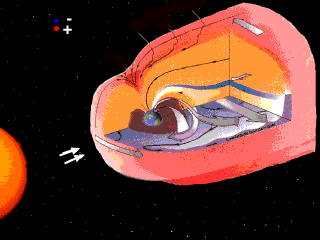
Dangerous particles don't hit the Earth's surface because they are forced by the magnetic field to move around the Earth. Particles do enter at the funnels over the poles or they gain entry far downstream
...more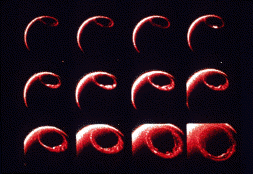
This figure shows a series of images of the auroral oval as it expands over the course of about an hour in response to a geomagnetic storm. This is an animation of the auroral oval expanding.
...more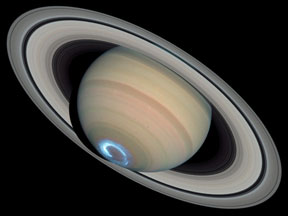
Have you ever seen the Southern or Northern Lights? Earth isn't the only planet that puts on these beautiful light shows, which are also called the "aurora". Aurora have been seen at both poles of Saturn,
...more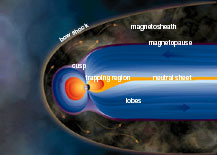
The Earth has a magnetic field with north and south poles. The Earth's magnetic field reaches 36,000 miles into space. The magnetic field of the Earth is surrounded in a region called the magnetosphere.
...more
The thermosphere is a layer of Earth's atmosphere. The thermosphere is directly above the mesosphere and below the exosphere. It extends from about 90 km (56 miles) to between 500 and 1,000 km (311 to
...more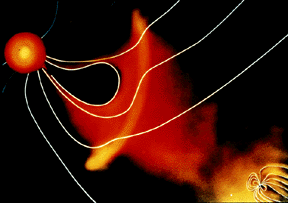
For a planet to be affected by a blob of material being ejected by the sun, the planet must be in the path of the blob, as shown in this picture. The Earth and its magnetosphere are shown in the bottom
...more


